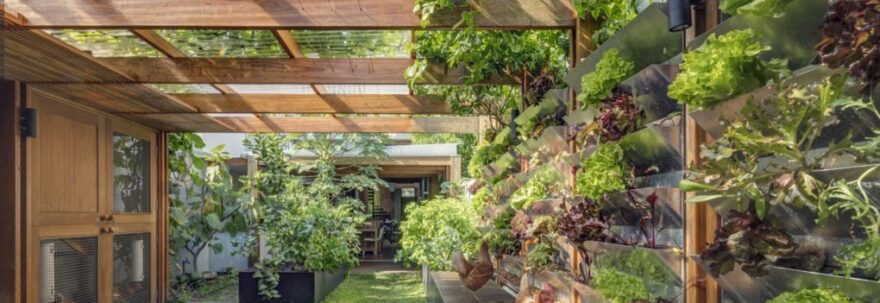Can you imagine not relying on the electricity grid to heat your home in winter or cool it in summer? Not needing a supply of drinking water to take a shower or brush your teeth? Not only would it allow you to save a lot of money every month, but your home would also be considered a self-sufficient house.
The main supplies of any home are energy and water, which makes it more difficult not to depend on them, but not impossible!
What is a self-sufficient house?
Being self-sufficient means being self-sufficient, not needing to depend on others to meet our needs. When we talk about a self-sufficient house, we refer to homes that do not need to be supplied from external sources, as they produce everything they consume. Reducing our consumption to the strictly necessary and taking advantage of the natural resources that nature provides us for free are the first steps to living the dream of the most eco-savers.
Next, I will share some ideas for having a self-sufficient home. Reducing energy use will help you have a self-sufficient home.
In addition to being a cost-saving and environmentally sustainable measure, cutting down on electricity consumption to the strictly necessary is the first step towards a self-sufficient home. Changing consumption habits can be costly at first, but little by little, we will become our best version of energy efficiency.
Some tips that can help us reduce energy costs in our daily lives are:
・ Use low-energy light bulbs, which will allow us to save up to 75% more energy.
・ Turn off the light in rooms of the house that you are not using.
・ Take advantage of natural light as much as possible.
・ Unplug electrical appliances that are not in use.
・ Run the washing machine with a full load: you will save electricity and water.
・ Set the thermostat to a maximum of 20ºC for heating and air conditioning equipment.
Find alternative water sources to make your home self-sufficient.
If having a self-sufficient home involves eliminating excess electricity consumption, it means that we must do the same with water. However, radically eliminating water consumption is not as easy because we use this resource more than we imagine. Therefore, it will be very important to find alternative sources of water to the drinking water supply network. This will depend a lot on the geographical region in which you reside and the water resources available to enjoy a self-sufficient home.
According to a study conducted in Spain on water consumption, the 2016 Survey on Water Supply and Sanitation revealed that the average water consumption of households was 136 liters per person per day, 3.0% more than in 2014. The highest average water consumptions were recorded in the Valencian Community (163 liters per person per day), Cantabria (155 liters), and Castilla y León (152 liters).
Some measures to help you stop wasting water are:
・Always have the dishwasher full before starting it.
・Brush your teeth with a glass of water.
・Prioritize a quick shower over a bath.
・ Reuse shower water while waiting for it to get hot to water plants.
・ Check the faucets to prevent leaks in the kitchen or bathroom.
Invest in self-consumption of electricity and take care of the environment with a self-sufficient home.
The goal of a self-sufficient home is not only to reduce electricity consumption but also to produce much of the energy that will be used in our daily lives. In addition to reducing our carbon footprint and contributing to sustainable development, installing solar panels can reduce our electricity bill by 50-70% of what we consume.
One of the most widespread beliefs about electrical self-consumption is to think that the greater the number of solar panels, the greater the profitability. Nothing could be further from the truth, this assumption is false. By installing more panels on your self-contained home, you will not only save less, but it will take more years to get the return on your initial investment.
Grow your own food and manage waste
If our goal is to become self-sufficient, we have to start considering the need to cultivate our own garden at home. Although it is normal to want to plant everything at first, it is advisable to start small by growing your favorite fruits and vegetables. Plant those foods that suit your climate and pay attention to the living space of each plant.
Regarding waste management, remember to recycle by correctly separating glass, cardboard, paper and plastic. If you also decide to recycle organic waste, you can use it as a natural fertilizer for the fertility of your plants in the garden of an incredibly self-sufficient house.



